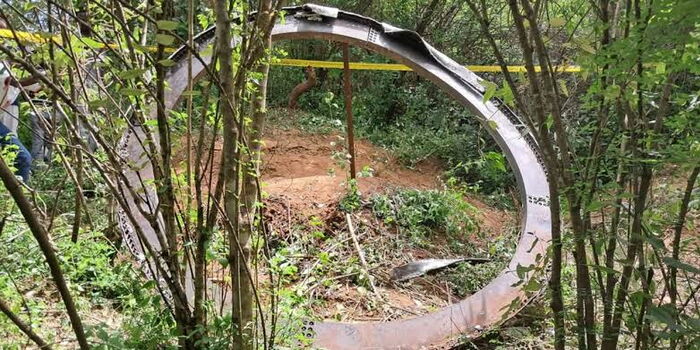A Harvard astrophysicist has questioned the theory suggesting that the 500-kilogram metallic object that crashed into Mukuku village in Makueni County, came from space. His analysis comes as global researchers join the race to unravel the source of the debris.
According to the analyst Jonathan McDowell, who works at the Harvard-Smithsonian Centre for Astrophysics, although space is increasingly crowded, large chunks of metal from rockets are generally not flying around in Earth orbit undetected and untracked.
“It was suggested that the ring is space debris, but the evidence is marginal,” wrote Jonathan McDowell in a blog post. The debris in question is a 500-kilogram metallic object that crashed into Mukuku village on the night of December 23, 2024.
The Kenya Space Agency, which is yet to release its results, identified the object as a piece of space junk that survived reentry. “Such objects are usually designed to burn up as they re-enter the Earth’s atmosphere or to fall over unoccupied areas, such as the oceans,” the agency said in a statement last week.
A photo collage of the metallic ring that fell from the skies and landed in Mukuku in Makueni County, on Monday, December 31, 2024.
KSA
The object has been the subject of international interest. However, investigations into space objects are ongoing. The government has issued a safety alert warning Kenyans against visiting the site.
Already, the Kenya Nuclear Regulatory Authority has taken samples to test for radioactivity. These results are also pending.
The highly regarded analyst of space objects, McDowell, has argued that if the debris indeed came from space, the most likely culprit was a fairing adapter for an Ariane V rocket, which launched into space from the European Space Agency’s Spaceport in French Guiana on July 7, 2008.
“Nevertheless, I am not fully convinced that the ring is space debris at all,” he added.
There are deferring opinions over the space debris. A lecturer and space tracker, Marco Langbroek, has differed with McDowell, suggesting that nearby material recovered several kilometers away from the metal ring, which resembled carbon wrap and isolation foil, could be evidence that the ring may have indeed fallen from space.
Langbroek has shared his theory of how the object ended up landing in Makueni, explaining why the object fell in Kenya, which is along the equator and lacks tracking stations.
Langbroek says his research shows that the object was last observed on December 23, when it was in a highly elliptical orbit, reaching a perigee, the point when the space object is closest to the earth, of just 146 km from the Earth. This was a week before an object crashed into Kenya.
“As this is a very low inclination orbit (1.56 degrees), it belongs to a class of objects that is ill-tracked due to a lack of tracking stations close to the equator,” he wrote. “This explains the 1-week gap between the last available orbit and the reentry.”
The government has promised to share any outcomes of their investigations, but that has not stopped researchers and scientists from sharing theories on the object’s crash.
A nano-satellite launched in the Space.
File


